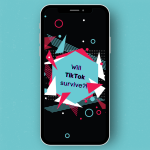Move beyond transactional giving in a trust economy
From Michael J. Tomlinson (“MT”), CEO and President, BDI
In today’s rapidly evolving philanthropic landscape, nonprofit organizations face unprecedented challenges in capturing and sustaining donor attention. With the rise of digital distractions and a declining number of charitable givers, the competition for connection has never been fiercer.
This topic has been top of mind for me personally – and within the wider industry of philanthropy for the last 12 months, if not longer. It was at a gathering of the Giving Institute last fall where I first heard Nathan Chappell, Senior Vice President of DonorSearch, speak on these challenges of competition (and opportunities) faced by organizations today.
It’s an important topic Chappell covers in his forthcoming book, The Generosity Crisis, and I want to synthesize for us some of the core takeaways and strategies for connection we can champion amidst these challenges. There is untapped opportunity to build trust and foster deeper relationships with donors, especially during the fall acquisition and year-end giving season.
The CHANGING LANDSCAPE of Philanthropy
For some time, I’ve been speaking on a concerning trend in philanthropy – the overall decline of giving (and decline of the tithe among Christian donors). The data reveals a stark reality – fewer Americans are making charitable gifts, and projections suggest this trend could worsen.
Chappell suggests that in just 49 years, the percentage of individuals donating annually could plummet to single digits, fundamentally altering the fabric of philanthropy in North America. This decline highlights an urgent need for nonprofits to reevaluate their strategies and adapt to a new reality where donor generosity cannot be taken for granted.
Threats to connection in the TRUST ECONOMY
Most NPOs do not operate with an awareness of the competition they face. And the competition is intense – Indiana University’s Nonprofits Project estimates there are roughly 2.5 million nonprofit organizations operating in the U.S.
Of those organizations who do recognize the competition, a great number focus on competing for dollars (i.e., getting that first gift from a donor) versus donor loyalty and building a relationship that will sustain giving over time.
Donors are far more sophisticated than many organizations give them credit for. They can sniff out transactional fundraising… and it does little to inspire their continued generosity.
“The future of generosity in America is not guaranteed,” says Ted Grossnicle, Emeritus Chair of the Giving Institute. We would be wise to adjust our expectations and innovate new strategies to reach donors in light of this reality.s, this means more opportunities to secure grants and build lasting relationships with foundations who may be aligned in value and mission to your cause.
Reversing the trend through RADICAL CONNECTION
In the world of for-profit business, long-standing connections with customers are highly incentivized. Just think about the number of customer loyalty programs you have to choose from: at your bank, at your preferred airline or hotel chain, or even the punch cards at your favorite coffee shop! These are all strategies that build trust and sustain loyalty in the for-profit market.
Yet, many nonprofits fail to prioritize donor relationships with the same fervor. Too often, the focus is on getting the gift, versus building a long-standing partnership with a donor who will faithfully support your cause far beyond their first donation.
And in the quest for donor attention, nonprofits often fall into the trap of criticizing competitors rather than celebrating their unique strengths. This scarcity mindset erodes trust among donors and damages the collective mission to drive positive change. Instead, nonprofits should strive for collaboration, engaging in open conversations and even partnerships that acknowledge and promote one another’s work.
To reverse the decline in generosity, nonprofits must prioritize relationships over revenue and mission over money. Boards and leadership teams should be deeply invested in growing donor Lifetime Value (LTV) and retention rates, recognizing that these metrics hold the key to sustainable success.
Nonprofits must shift from transactional fundraising to fostering radical connections built on authenticity, transparency and shared values with their supporters. The key to overcoming this challenge lies in building relationships with your donors and with other charities in your sphere of influence. This connection is a powerful currency in today’s trust economy.
Personalized attention through PRECISION PHILANTHROPY
To thrive in this new era, nonprofits must leverage technology once reserved for for-profit enterprises. AI and data analytics offer powerful tools to personalize donor interactions, enhance engagement, and tailor communication to individual preferences.
Advanced analytics can also help charities better understand donor behavior and motivations. This is valuable data that empowers nonprofits to create experiences that resonate deeply with their unique donor audiences.
Storytelling, in particular, is a powerful way to engage supporters and help them understand the impact of their giving. This fall, BDI will introduce several storytelling videos that are the result of our investment in precision philanthropy. These videos use AI imagery to tell compelling stories of need that will break through the noise of digital media to rally donor support.
AI offers scalable solutions, these videos being but one example, that allow organizations to tailor communication and engagement strategies. By communicating what makes your nonprofit unique, you not only strengthen your connection with donors but invite them into your mission of changing lives and creating a better future.
Final Thoughts
I strongly affirm Nathan Chappell and the Giving Institute’s belief that the path to overcoming the competition for donor attention lies in radical connection.
In fact I absolutely love this concept because it lies at the very heart of all that is good, worthy, life-changing and totally necessary about the ministry being accomplished on the front lines and in communities across our nation.
Remember this:
- We are radically committed to one another.
- This is people work that can only truly change lives when we’re connected.
- And it absolutely takes courage and drive and grit to press ever forward and onward to do more and better – even when we know that the supporting base for charity and ministry is in decline.
I was recently pressed about my outlook regarding what’s ahead for generosity and philanthropy – given the reality of the climate we operate today. I hope my answers surprise no one.
As always, there are plenty of capable and committed supporters, and plenty of money for the nonprofit organizations and ministries that change lives at scale and move the needle on human suffering and restoration. Yes, some donor supported organizations will decline (LOSE) and others will thrive (WIN). All cases for support are not equal.
I welcome the discernment of donors to support those who really change the world for the better. That said, it is up to us to make clear invitations to supporters to join our outstanding and vital missions. It’s up to us to use every resource and partnership available to connect. And it’s up to us to tell the stories that inspire and bring hope to supporters.
Building trust, fostering collaboration and leveraging technology through precision philanthropy are essential to leading the way forward in responsible, relationship-driven fundraising.
The stakes are high, but the rewards are even greater. By committing to these principles, nonprofits (and YOU) can create enduring relationships with donors, securing a future where generosity thrives and positive change becomes a reality.
Be encouraged: We are in this together.

Stay updated on what’s next for nonprofit fundraising!
Sign up for our newsletter today to get the fuel that will help boost your fundraising for nonprofits to the next level.




